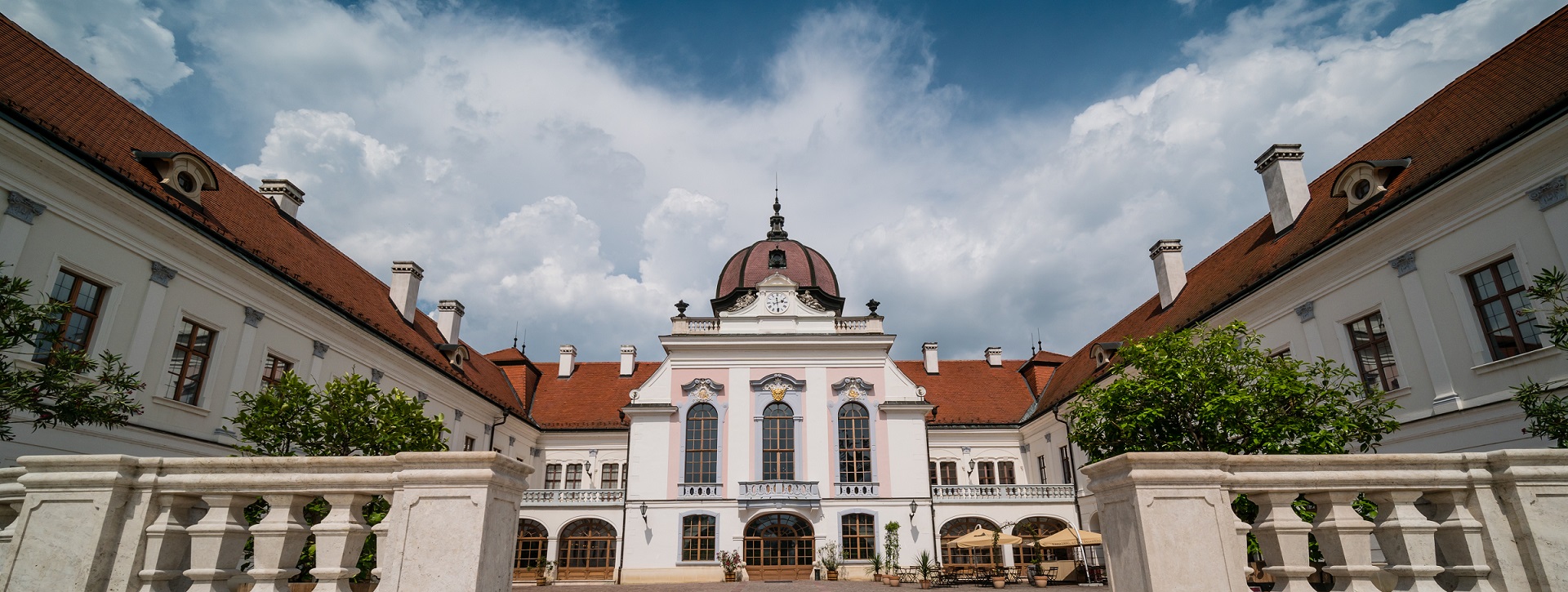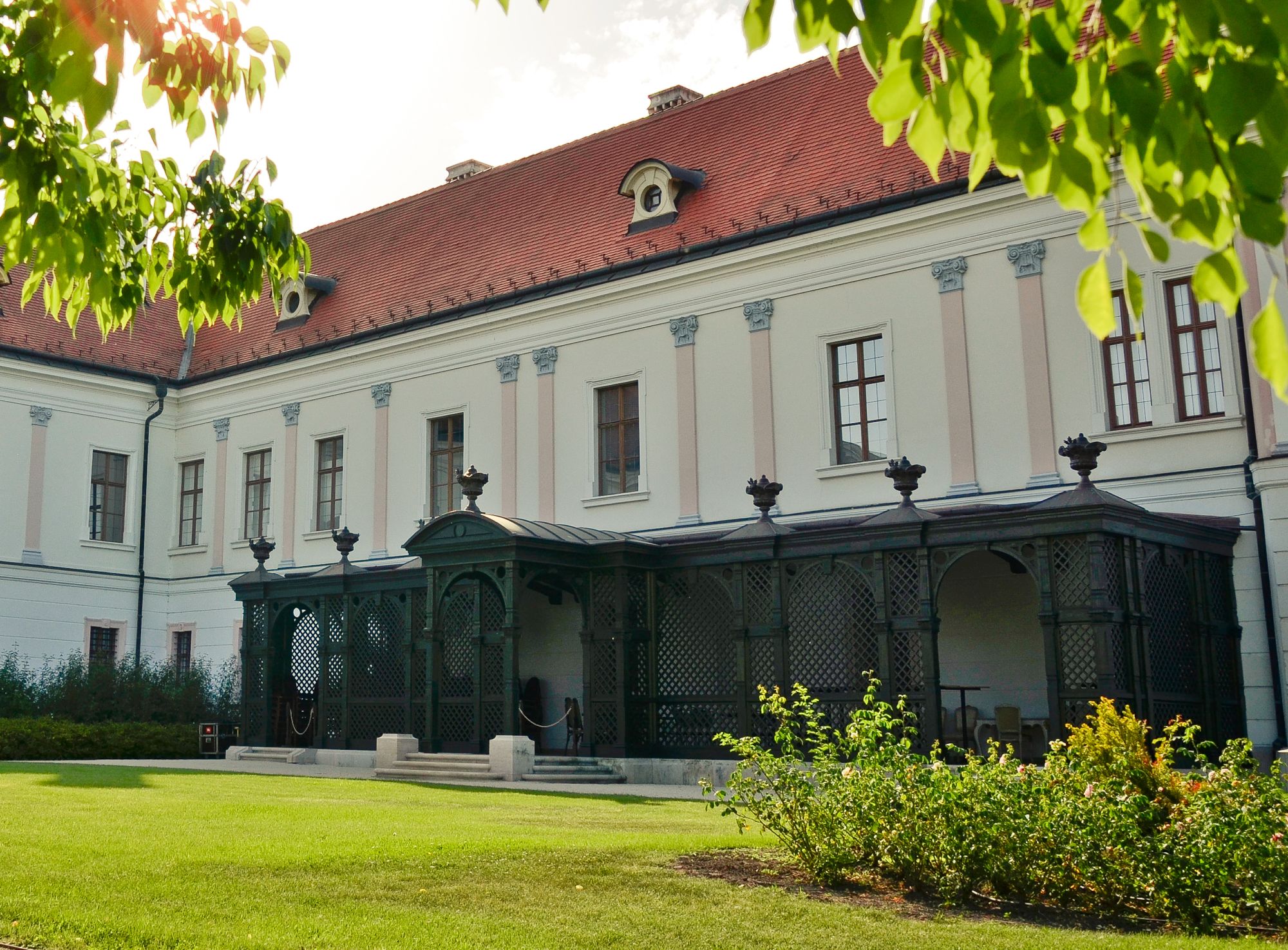
The complete renovation of the Royal Palace of Gödöllő may begin
The comprehensive renovation of the Royal Palace of Gödöllő is set to begin soon, thanks to a joint effort by the Hungarian State and OTP Bank. The rehabilitation program, estimated to cost around 40 billion forints and expected to span nine years, aims to restore the entire historic palace complex and its 26-hectare park to the state in which Queen Elisabeth (“Sisi”) once saw it from 1867 onward.
The Hungarian State and OTP Bank Unite to Launch the Full Restoration of the Gödöllő Royal Palace
Following the modernization works related to the preservation of cultural heritage, the site will become a world-class cultural venue, event center, tourist attraction, and visitor center.
The agreement for the investment was signed in Gödöllő on October 13 by Viktor Orbán, Prime Minister of Hungary, and Sándor Csányi, Chairman of OTP Bank and of the Board of Trustees of the Foundation for the Hungarian University of Agriculture and Life Sciences.
A Historic Landmark with Deep Roots
October 13, 2025 – Gödöllő. Construction of the Royal Palace of Gödöllő began after 1735, initiated by Count Antal Grassalkovich, one of the most prominent Hungarian nobles of the 18th century. Through decades of development, the building acquired its distinctive and highly representative layout, becoming a model of Central and Eastern European Baroque palace architecture.
Notable guests included Maria Theresa, Sándor Petőfi, and Lajos Kossuth, while its most famous resident was Queen Elisabeth (Sisi).
After World War II, the palace served as military barracks and later as a social care home—uses unworthy of its status, which led to its gradual decay. Partial restoration began in 1995, and a few rooms opened to the public in 1996. Though further developments followed, a full-scale, expert rehabilitation of the historic complex and park has yet to take place—until now.
The Scope of the Renovation
The new rehabilitation program includes the restoration of 6,000 square meters of severely deteriorated sections, as well as the modernization of 7,500 square meters of already restored heritage areas, including the main wing renovated thirty years ago. The 26-hectare palace park will also be renewed.
The palace will receive a new heating system, air conditioning, and humidity control. In addition to refreshed spaces for families and tourists, it will gain modern educational, research, and restoration facilities.
The complex’s event and hospitality capacity will be significantly expanded: the historic brewery will reopen, and the Musicians’ Wing—once home to the Grassalkovich family’s orchestra members—will host music masterclasses.
Statements from the Leaders
“The historical figures and events connected to the Royal Palace of Gödöllő are deeply intertwined with the birth and development of the Hungarian nation-state. It is therefore our duty to restore this building to its former glory, using the most advanced technologies available today. These walls have witnessed some of the most important chapters of our shared national story, and it is our task to preserve and retell them in a form that future generations can experience and learn from,”
— said Viktor Orbán, Prime Minister of Hungary, at the signing ceremony in Gödöllő on October 13.
The state–private partnership–based rehabilitation program, expected to last nine years, focuses equally on heritage preservation and value creation. Of the total 40 billion forint investment, OTP Bank will contribute 20 billion forints.
At the event, Sándor Csányi, Chairman of OTP Bank and of the Foundation owning the Palace, said:
“As Hungary’s leading bank, we must take part in major community projects that cannot be realized without significant private investment. OTP Bank’s involvement in the restoration of the Gödöllő Royal Palace reflects both our social role and our economic strength. Beyond its cultural and touristic significance, the project will also contribute to the development of the region and the growth of local enterprises.”
A Living Cultural Hub
Thanks to its European cultural ties, the Royal Palace of Gödöllő is already a vibrant and active tourist and cultural site. It remains one of Hungary’s most renowned attractions worldwide, particularly popular among visitors from Asia.
In 2025, the palace and its events are expected to welcome around 350,000 visitors, while its park will attract 800,000–900,000 guests. The planned developments will significantly increase these numbers, ensuring the palace—and the region—continues to grow and thrive.
Read more

 The rooms of the violet suite were reconstructed in 1996 based on authentic sources. Beautiful portraits of the Queen can be seen on the walls, together with portraits of the most outstanding politicians of the age who Elisabeth had been in contact with in preparation for the Compromise of 1867. In the writing room we can get to know Elisabeth’s Hungarian language and history teachers, while the dressing room gives us a picture of her favourite pastimes: travelling and horse riding. In the bedroom hangs a full-length painting of Maria Theresa, just as it was in the time of Antal Grassalkovich I, who had the Palace built.
The rooms of the violet suite were reconstructed in 1996 based on authentic sources. Beautiful portraits of the Queen can be seen on the walls, together with portraits of the most outstanding politicians of the age who Elisabeth had been in contact with in preparation for the Compromise of 1867. In the writing room we can get to know Elisabeth’s Hungarian language and history teachers, while the dressing room gives us a picture of her favourite pastimes: travelling and horse riding. In the bedroom hangs a full-length painting of Maria Theresa, just as it was in the time of Antal Grassalkovich I, who had the Palace built. Just before Elisabeth arrived for a visit to Gödöllő, gardeners would always plant her favourite flowers in the front garden: violets and pansies. In the finely restored front garden are the gravestones of two of the queen’s favourite dogs. The front garden is accessible through the wooden veranda. The wooden veranda was designed by court architect Ferdinand Kirschner. It was presumably dismantled following the queen’s death. Queen Elisabeth’s porch was rebuilt in 2010 in accordance with the original designs.
Just before Elisabeth arrived for a visit to Gödöllő, gardeners would always plant her favourite flowers in the front garden: violets and pansies. In the finely restored front garden are the gravestones of two of the queen’s favourite dogs. The front garden is accessible through the wooden veranda. The wooden veranda was designed by court architect Ferdinand Kirschner. It was presumably dismantled following the queen’s death. Queen Elisabeth’s porch was rebuilt in 2010 in accordance with the original designs.

